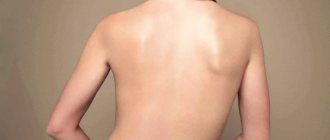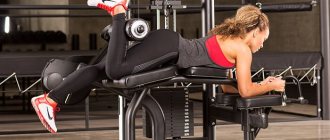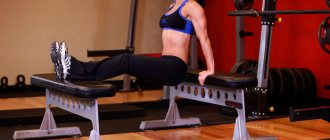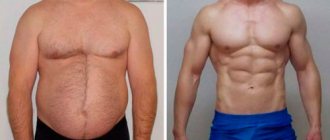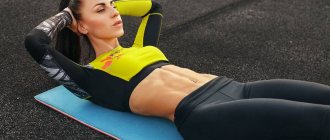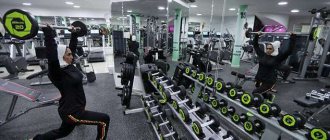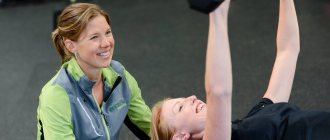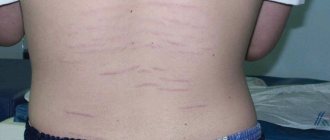Beautiful, toned buttocks have always been a source of pride for their owners and the envy of those who do not have such roundness. World-famous beauties with “Brazilian butts” shatter the hearts of the stronger sex, or, at least, cause tachycardia in them due to the release of large amounts of adrenaline. Many ladies spend a huge amount of time in the gym, trying to achieve or restore their former elasticity and volume to their buttocks. However, physical exercises, cosmetic procedures and massages are not always able to restore what was lost or acquire something that was not given by nature. There are constitutional features of the figure for which conservative methods are, in principle, not effective. In such situations, plastic surgery comes to the rescue.
METHODS FOR CORRECTING THE FORM OF THE BUTTOCKS
Today, there are several methods in the arsenal of aesthetic surgery to improve the shape of the buttocks, increase their volume and give the necessary elasticity:
- buttock lift with threads (Siluet-Lift, Tissulift and others);
- surgical butt lift;
- installation of implants (buttock replacement);
- lipofilling of the buttocks or, as this method is also called, Brazilian buttock lift.
Regular readers of this site are familiar with some methods of thread lifts from the author’s previous reviews (see the article “Thread lifts”). As for fat grafting of the buttocks, this is a separate large topic, which is also covered on the pages of this site.
In today's review, we will touch upon the anatomy of the gluteal region, ptosis and the mechanisms of its formation, and talk about methods for correcting the shape of the buttocks - surgical buttock lifts. These issues are not sufficiently covered in the domestic literature and therefore, in our opinion, are of great interest to the reader.
Endoprosthetics of the buttocks
The essence of the method is to place special implants under the skin. They are made from high-quality materials, after the introduction of which it is necessary to follow certain operating rules and a lifestyle that will not harm the prosthesis.
The operation is performed through a small incision (3-4 cm), into which the implant is inserted; the procedure lasts about 50 minutes. Epidural anesthesia (spinal) is most often used. According to reviews, the effect lasts for life.
Contraindications:
- age less than 18 years;
- cardiac problems in acute or chronic form (arrhythmia, tachycardia, etc.);
- recovery period after a heart attack or stroke;
- long blood clotting;
- acute respiratory infections;
- the time at which a chronic gastrointestinal disease (for example, gastritis) worsens;
- the process of inflammation inside the body;
- oncological diseases;
- general damage to the skin or muscle tissue at the site of surgery;
- recovery from recent surgery;
- age over 60 years;
- diabetes;
- AIDS or HIV;
- overweight;
- high risk of swelling.
ANATOMY OF THE BUTTLE REGION WHEN CORRECTING THE SHAPE OF THE BUTTOCKS
Rice.
1 The structure of the buttocks So, the skeleton of the buttocks is made up of the pelvic bones, the connections between which are provided by dense ligaments, indicated in this figure:
- iliolumbar ligament;
- interosseous sacroiliac ligaments;
- sacro-osseous ligament;
- sacrotuberal (tuberal - ischial tuberosity) ligament;
- superior posterior spine of the iliac crest;
- posterior sacroiliac ligament (Figure 1).
Rice.
2 Gluteus maximus and gluteus medius muscles. The pelvic bones are covered with muscles, over which lies a layer of subcutaneous fat. In particular, this figure shows the large (m.gluteus maximus), and above it the middle (m.gluteus medius) gluteal muscles (Figure 2).
Rice. 3 Superficial muscle layer.
The following figure shows the gluteus maximus (Figure 3, a) and gluteus medius (Figure 3, b) muscles in isolation. Both of these muscles make up the so-called superficial muscle layer. Beneath the superficial muscle layer is a deep layer consisting of several individual muscles (Fig. 4).
Rice. 4 Deep muscle layer.
For greater clarity and consideration of the deep muscles of the gluteal region, it is necessary, relatively speaking, to fold back the gluteus maximus muscle - 1a, 1b in Figure 4. Next: 2 - the middle and, behind it, the gluteus minimus muscles; 3 – pyramidal; 4 – superior twin (m.gemmelus); 5 – internal obturator (m.obturator); 6 - inferior gemellus and 7 - external obturator muscles.
Rice. 5 The location of the branches through which the inertia of the gluteus maximus muscle is carried out.
Innervation of the gluteus maximus muscle is carried out through branches (Fig. 5 - 1,2,3,4) coming from the greater sciatic nerve (6). Number 5 is the pyramidal muscle, from under which the sciatic nerve emerges (6); 7 – coccygeal-tuberal ligament; 8 – ischial tuberosity (tuberal); 9 – greater trochanter (trochanter major) of the femur (Fig. 5).
Rice. 6 Aponeurosis - dense connective tissue membrane
The gluteus maximus and medius muscles are covered with an aponeurosis (a dense connective tissue membrane), over which lies a layer of subcutaneous fat. The uniformity and thickness of this layer determine the smoothness of the transition of the contours of the buttocks (Fig. 6).
There is another important anatomical formation in the gluteal region that is crucial in the formation of ptosis - the subgluteal groove, above which the gluteal fold is formed and held in place. The subgluteal groove is an integral part of the supporting system of the buttocks and is a fusion of the skin and periosteum in the area of the ischial tuberosity (see Fig. 5 No. 8) through dense connective tissue structures. Conventionally, these tight fusions can be called the gluteal ligament, which is part of a single ligamentous supporting system of the buttocks (Fig. 7).
Rice. 7 Multiple dense connective tissue fibers connect the ischial tuberosity and the skin at the very bottom of the buttocks. This structure is responsible for the formation of the gluteal fold and separates the thigh from the gluteal region.
The suspensory ligamentous system of the gluteal region was first partially described by the French surgeon Hypolite Morestin in 1896. He believed that this ligament extends only in the area of the intergluteal fold and perineum due to the intimate fusion of the skin and bone structures of the pelvis through dense connective tissue fibers. In fact, this is a semicircular system that starts from the upper anterior iliac spine, goes through the pubic joint, the perineum, through the ischial tuberosity and ends in the sacrococcygeal joint. Figuratively, this ligamentous fixation system can be represented as a wide, very dense band surrounding the thigh and connecting the pelvic bones and skin. It is surprising that the designers who developed a model of very tight tights with a tightening and supporting effect on the buttocks, probably intuitively, without having a deep knowledge of the anatomy of this area, emphasize and strengthen the ligamentous apparatus described above in their models.
From the above, the following conclusions can be drawn:
- The supporting ligamentous system is not directly related to the muscles of the buttocks and thighs. That is, it cannot be strengthened through physical exercise.
- This very important anatomical formation, which supports and preserves the shape of the buttocks, cannot be destroyed. Rupture of the supporting ligaments (for example, when performing aggressive liposuction in this area) leads to destruction of the ligamentous apparatus and, as a consequence, to ptosis of the buttocks (Fig. 8).
Rice. 8 Ptosis of the buttocks after aggressive liposuction in the area of the upper part of the posterior thigh and gluteal fold.
In the thickness of the subcutaneous fat layer there are many connective tissue transverse bridges (trabeculae), ensuring the compactness of the adipose tissue, low mobility and elasticity of the skin (Fig. 9). Subcutaneous fat is divided into a superficial layer (with more densely and compactly lying fat cells), a middle and deep layer (with large, loose fat cells).
Rice. 9 The structure of the subcutaneous fat layer.
Exercises to help fight hollow thighs
There are two muscles that are involved in the area where the ears appear - the gluteus medius and gluteus minimus. The following exercises will target these muscles to help smooth out the dimples:
Lateral leg raises (20 reps each leg)
Lie on your left side, rest your head on your left arm and place your right hand on the floor in front of your chest.
Your bottom leg should be bent and your top leg should be straight. Without moving any other part of your body, slowly lift your right leg as high as possible.
Pause, then return to the starting position.
Complication: Use additional weights on the ankles.
Arm and leg abduction (20 reps with each leg)
Get on your knees. Tighten your abs and buttocks and slowly walk your right leg and left arm back until they are straight.
At the extreme point, squeeze your buttocks even more tightly for a second. Do 6 approaches.
Complication: Use additional weights on the ankles.
Bodyweight squats (20 reps)
Stand wider than your shoulders. Begin to move your hips back and lower yourself down as if you are about to sit down. Be careful to keep your back straight and don't let your knees go past your toes.
Complication: use a barbell.
Lunges (20 reps with each leg)
Stand shoulder-width apart with your arms at your sides. Take a big step forward with your left foot and bend your left knee.
Bend your right knee so that your right foot is resting on your toes. Raise your arms forward to shoulder height, palms facing inward. Return to the starting position and repeat on the other side. Make sure each knee forms a right angle and does not extend beyond the toes.
Complication: Hold 2 dumbbells in your hands.
Try these exercises to round out the sides of your butt. Even if you don't manage to completely eradicate the "ears", you will get promising results that accompany any training.
REASONS FOR DEVELOPMENT AND CLASSIFICATION OF PTOSIS OF THE BUTTOCKS
With age, as well as due to decreased muscle tone, sudden weight loss, due to hormonal disorders and changes, connective tissue bridges consisting of collagen and elastin lose their elasticity and stretch. In parallel with this, the volume of fat cells may decrease. These factors together lead to increased mobility and downward displacement of the skin-fat layer under the influence of gravity. In a word – to the occurrence of ptosis (Fig. 10).
Rice. 10 The structure of the subcutaneous fat layer. a – normal, c – ptosis of the buttocks.
The medical term ptosis of the buttocks was introduced by the famous Brazilian plastic surgeon Raul Gonzales. In his opinion, ptosis of the buttocks is excess skin and soft tissue of the gluteal region, which descends below the subgluteal groove.
HOW TO DETERMINE PTOSIS OF THE BUTTOCKS
Ptosis of the buttocks can be congenital (as a feature of the anatomy) and acquired due to sudden weight gain or loss, as well as due to the loss of tissue elasticity and firmness with age and hormonal disorders. The buttocks settle slowly, forming a gluteal fold, the length of which gradually increases from the inner edge of the thigh to the outer. In order to determine the presence of ptosis and its degree, it is necessary to evaluate 2 projections:
The first criterion is the evaluation of the photograph from the front. On the rear projection in front, it is necessary to conditionally draw a line that will divide the posterior surface of the thigh into 2 halves - the posterior midline of the thigh (line M) - and extend it to the buttocks. The second vertical line must be drawn from the ischial tuberosity (tuber) to the sacrum. In the diagrams proposed by R. Gonzales, this is the so-called T-line. Ideally, from the front, the projection of the gluteal fold should not be visible or it should not extend beyond the posterior midline of the thigh. As ptosis of the buttocks progresses, the fold lengthens and in the initial stage extends beyond the midline of the thigh, and then continues to the lateral (outer) part of the thigh.
Rice. 11 Buttocks without ptosis
In this diagram (Fig. 11) there is no ptosis - this is the norm. There is no gluteal fold at all or it only reaches the T line of the ischial tuberosity.
Rice. 12 Minimal preptosis
Minimal preptosis (Fig. 12) - the gluteal fold crosses the T-line of the ischial tuberosity, but does not reach the midline of the thigh - M.
Rice. 13 Moderate preptosis
Moderate preptosis (Figure 13) - the gluteal fold reaches the midline of the thigh, but does not cross it.
Rice. 13 Moderate preptosis
Moderate preptosis (Figure 13) - the gluteal fold reaches the midline of the thigh, but does not cross it.
Rice. 14 Borderline preptosis
Borderline preptosis (Figure 14) - the gluteal fold crosses the midline of the thigh.
Rice. 15 True ptosis of the buttocks
True ptosis of the buttocks (Fig. 15) - the gluteal fold is pronounced and crosses the midline of the thigh at a considerable distance.
The degree of ptosis is determined by a ruler, which is placed in the subgluteal groove and the descent of the gluteal fold is assessed in centimeters (Fig. 16).
Rice. 16 How to determine the degree of ptosis.
- I degree – descent of the gluteal fold 0.5 cm below the subgluteal groove;
- II degree – by 1 cm;
- III degree – 2 cm or more.
The second criterion is profile evaluation. From an aesthetic point of view, it is important to evaluate the femoral-gluteal angle in the profile projection. To do this, it is necessary to connect two conditional lines: the 1st - passes through the point of maximum convexity of the buttocks, and the 2nd - the line of the back of the thigh (Fig. 17).
Rice. 17
As a result, an internal angle is formed, which ideally should not exceed 45°.
Rice.
18 Acceptable (no ptosis of the buttocks) values of the femoral-gluteal angle in the profile projection are no more than 90°.
Fig. 19
As ptosis of the buttocks progresses, the value of this angle will be more than 90°. Accordingly, the more obtuse the angle is formed, the longer the gluteal fold in the front view and the greater the degree of ptosis.
Cosmetology procedures
Modern cosmetology salons offer a wide range of services to solve almost any problem. If a dimple appears on the buttock, cosmetologists recommend the following procedures:
- Mesotherapy. Suitable for all areas of the body, including the buttocks. A variety of vitamin injections that deliver nutrients and supplements under the skin can significantly improve the body's condition after the first use. However, for a lasting result, at least 3-5 sessions are required.
- Subcutaneous reinforcement. This is a cosmetic procedure in which collagen threads are injected into the problem area. They tighten the skin and fill in the hollows of the buttocks. The procedure is performed under local anesthesia, as it may cause pain.
- Vacuum massage. Can be carried out both in the salon and at home. The procedure will require a special jar that will create pressure on the skin. Hardware massage is performed using a special device that creates the required pressure inside the jar. By moving in a circular motion over the skin, you disperse stagnant lymph and increase blood circulation. As a result, you can observe a noticeable reduction in cellulite and an improvement in skin quality.
- Lymphatic drainage massage. It is considered a very effective procedure. Its essence lies in the fact that with the help of special movements, lymph is accelerated in the body. As a result, it quickly removes toxins from cells and activates metabolism. This leads to an improvement in overall well-being and body condition.
METHODS FOR SURGICAL CORRECTION OF THE FORM OF THE BUTTOCKS
To correct congenital or acquired ptosis of the buttocks, a surgical buttock lift technique is used, which has several varieties: upper, lateral, medial (Batterfly) and the so-called DTA lift.
The main problems that can be solved with the help of surgical braces:
- elimination of ptosis (drooping of the soft tissues of the buttocks);
- elimination of tissue sagging;
- elimination of excess skin of the buttocks;
- formation of new shapes and improvement of existing forms.
The method of correcting the shape of the buttocks is selected individually for each patient, depending on the structural features of the buttocks, pursues various goals and is used to tighten different areas of the buttocks, as well as the outer thighs. In the diagrams below, solid lines indicate skin incisions, between which de-epidermization (removal of the surface layer of skin) of skin-fat flaps will be performed. They will further play the role of autoprostheses. The dotted line indicates possible levels of detachment of the skin-fat flap (see below for more details).
Rice. 20 Upper (Pascal or Louran) lift
The upper (according to Pascal or Louran) lift (Fig. 20) aims to tighten the upper outer sections of the buttocks and thighs, and also allows you to create roundness in the upper sections of the buttocks. The technique is effective for significant ptosis of the buttocks and sagging tissue in the “breeches” area.
Rice. 21 Lateral lift and inferior DTA lift
With a lateral lift (Fig. 21) (solid lines of incisions in the flank area), the situation with moderate sagging and flabbiness of soft tissues and skin in the area of the trochanters (large tuberosities of the femur), that is, the outer buttocks and upper-outer thighs, improves. And with the help of the lower DTA-lift (dermo-tuberal anchorage - formation of skin attachment to the ischial tuberosity), indicated by solid lines in Figure 21 in the area of the gluteal fold, you can re-form the subgluteal groove (if necessary in Figure 21), correct excessively elongated buttocks, eliminate asymmetry and mild ptosis, sagging of the lower buttocks.
Rice. 22 Medial buttock lift
Medial (Batterfly) - (Fig. 22) allows you to eliminate mild or moderate ptosis of the buttocks.
The main feature of modern methods of gluteoplasty is that in addition to tissue tightening, it is possible to additionally add volume through autoaugmentation, that is, the creation of autoprostheses from excess of one’s own tissues. This method of operation was first proposed by the famous French plastic surgeons Claude Le Louarn and Jean Louis Pascal. They have shown the benefits of preserving the patient's own tissue to improve the shape of the buttocks and restore lost volume. The previously used methods of traditional dermolipectomy (removal of a skin-fat flap) did not give the desired result, and the buttocks still remained flattened, except that the skin seemed more taut and smooth.
Correction of hips using subcutaneous reinforcement
The procedure involves lifting and correcting the buttocks using collagen threads. Like other procedures, the operation is performed under anesthesia. Duration is from 30 minutes. up to 2 hours. The result lasts for 3-5 years.
Contraindications for the procedure:
- pregnancy and lactation;
- long blood clotting;
- at the time of surgery, illness, such as ARVI;
- presence of cancer;
- possibility of skin inflammation;
- various skin diseases.
OPERATIONS FOR SURGICAL CORRECTION OF THE SHAPE OF THE BUTTHOLES USING THE “BUTTERFLY” METHOD
Rice.
24 The first stage of the operation to correct the shape of the buttocks After making skin incisions along the intended lines and de-epidermization (removal of the surface layer of skin) on the selected “islands,” the ends of the skin-fat flap are separated and unfolded towards each other (Fig. 24, a). The latter are stitched together, forming an “autoprosthesis” (Figure 24, b). This stage of the operation can be reminiscent in its technique of making dumplings, when the corners of the dough are brought together and molded to obtain a completed shape.
The released skin-fat “flap” below the selected “islands” covers the formed “autoprosthesis” (Figure 25, a - shown by an arrow), and the edges of the skin wound are stitched together (Figure 25, b).
Thus, in accordance with the technique of this operation, the skin-fat flap is not simply cut out and removed as redundant, but an “autoprosthesis” is formed from it. Thanks to this surgical technique, in addition to tightening the skin, it is additionally possible to increase the projection, fill the upper part and recreate the lost volume of the buttocks.
Expert advice
The selection of means to eliminate pits on the buttocks is a purely individual matter. For some, cellulite creams help well, while for others, solving this problem can take many years. The main thing to achieve success is not to stop and continue to look for ways to solve the problem. If you have the time and energy, it is better to start with strength training. They can not only improve the quality of your body, but also improve your health. For busy people, salon treatments that take less time are best. But there are ways that suit everyone. It is important that they do not require significant effort. By following these simple rules, you can qualitatively change your life. The recommendations are:
- Get enough sleep. It is better to go to bed before 11 pm and get up around 7 am. At this time, processes occur in the body that rejuvenate and help you remain most productive.
- Drink more water. Plain water without sugar can reduce hunger and increase your energy. Experts recommend that an adult drink about 1.5-2 liters per day.
- Spend some time outdoors every day. Although it is not easy for modern city dwellers, even a 30-minute walk in the park saturates your body with oxygen and improves your health.
- Move more. WHO officials believe that to maintain health, a person needs to take about 10 thousand steps a day. Lack of activity has a bad effect not only on your appearance, but also on your mood. By training yourself to walk for about an hour every day, you will make a big contribution to your health and appearance.
TECHNIQUES AND STEPS OF OPERATION FOR CORRECTION OF THE SHAPE OF THE BUTTOCKS
The buttock lift surgery is performed under combined anesthesia (epidural and drug sleep) and takes from 1.5 to 2.5 hours. Before the operation, marking is carried out, the proposed area of the skin-fat “island” is outlined, from which the “autoprosthesis” will be formed (Fig. 26). We will not dwell in detail on the principles of preoperative marking, so as not to overload readers with unnecessary information.
Rice. 27 Preparing the operating team for the start of the operation
Rice. 28 Skin incisions were made according to the intended pattern and the skin-fat “flap” below the “islands” was peeled off
Rice. 29 The stage of de-epidermization of the skin (removal of its surface layer) has been completed.
Rice. 30 Checking the sufficiency of the boundaries of the detachment of the “flap of skin-fat”, which should cover the deep-epidermised “islands”. In this case, the upper and lower edges of the skin wound should freely reach each other without any significant tension.
Rice. 31 The inner (medial) edge of the de-epyremized flap, the “butterfly wing,” is shown, separated from the aponeurosis of the gluteus maximus muscle. The outer edge of the “butterfly wing” is separated in a similar way. This selection of edges must be carried out very carefully and carefully - it is necessary to maintain sufficient vascular nutrition of the “island”, carried out by perforating (penetrating from the depths) arteries.
Rice. 32 The edges of the “island” are released, turned inward and stitched together, as shown in the diagram of Figure 24. This photograph shows that on the left half of the buttocks an “autoprosthesis” has already been formed, resembling an oval in shape. On the right half of the buttocks, the formation of the flap is not yet completed.
Rice. 33 The stage of formation of autoprostheses on 2 sides has been completed.
Rice. 34 The “flap” of the skin-fat flap covers the “autoprosthesis” formed by the surgeon. The photo shows that the upper and lower edges of the wound are compared to each other with temporary adapting sutures.
Rice. 35 The operation is completed, the wounds are sutured in several rows, with an intradermal continuous suture. Active drains (tubes) are installed in the lower part of the buttocks.
Rice. 36 View of the buttocks in profile after completion of the operation. The projection and volume of the buttocks has increased significantly, the gluteal fold has smoothed out, the skin is taut and smooth.
As a rule, after surgery, patients remain in the hospital for one day, and then visit the surgeon for dressing changes on an outpatient basis. It is necessary to wear compression garments for 3-4 weeks, limit physical activity, hot procedures, visits to baths, saunas for 1.5-2 months. Sutures are removed 7-10 days after surgery.
With the lateral and superior lift according to Pascal or Louran, the same techniques are used to form “autoprostheses”. The only difference is the location of the incisions on the skin. Therefore, we did not consider it necessary to go into detail about these butt lift methods.
The technique of the DTA (lower) lift operation has several fundamental differences from previous techniques. And we will be happy to tell you about the nuances of this operation.
Recommendations for activities
To remove dimples on the buttocks, follow these training recommendations:
- Focus on basic exercises that build volume. Work out the relief of the buttocks with insulating elements at the end of the lesson.
- Don't forget about recovery. Girls need to rest at least 1-2 days between butt workouts.
- basic exercises for 3-4 sets of 12-15 repetitions, isolating exercises for 3-4 sets of 15-20 repetitions.
- Don't chase the scales. The most important thing in glute training is to feel the tension in the target muscles.
- Change your training plan every 8-10 weeks so that your buttocks do not have time to get used to the load.
- If you are overweight, do moderate cardio sessions (biking, outdoor games, running, walking) on weekends.
And, of course, don’t forget about healthy eating. Avoiding sweet and starchy foods will help you gradually reduce your body fat. And natural meat, fish, poultry, vegetables, herbs, cereals, vegetable oils will help increase the volume of the gluteal muscles.
What does it mean if there are no dimples?
The absence of dimples above the lower back is an alarming sign. It signals that the joints are not functioning properly.
It is also dangerous to move the depressions to another place. If you are surprised to discover that the dimples of Venus are located on the side or at the top of the sacrum, make an appointment with your doctor. He will diagnose and prescribe treatment.
The joints located in this area can work in several directions. If the trajectory of their movement is incorrect, the depressions appear in a different place. As a result, a pinched nerve may occur.
A symptom of this disease is often acute pain in the lower back. In this case, the patient cannot straighten up or get out of bed.
Another disease that can develop due to improper functioning of the sacral and lumbar joints is intervertebral hernia. Its appearance can also be indicated to us by the absence or movement of dimples on the back.
Why are dimples needed in the lower back?
Some women have no idea what magical power these depressions on the sacrum have. Men cannot take their eyes off them.
In many girls these depressions are more visible, in others they are almost invisible. Men believe that clear dots indicate a lady’s bright temperament and sexuality.
Science offers its explanation for the appearance of these marks. Scientists note that all women without exception have dimples of Venus. This is a feature of the structure of the body. And it has nothing to do with a person’s character traits. Also, these marks have no connection with the girl’s weight and her figure.
The mysterious dimples on the lower back are unique shock absorbers of the human body. At the junction of the sacrum and pelvis, there is a lack of connective tissue and insufficient development of tendons.
In addition to this, the layer of subcutaneous fat in this area is very small. Therefore, dimples help smooth out sudden movements while walking. They reduce pressure on the sacrum and eliminate strong changes when running.
